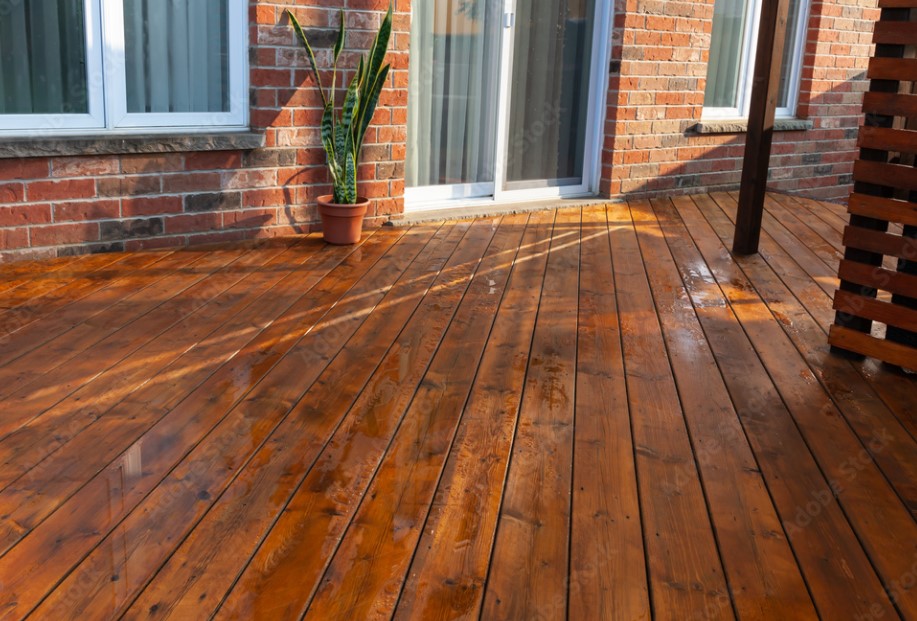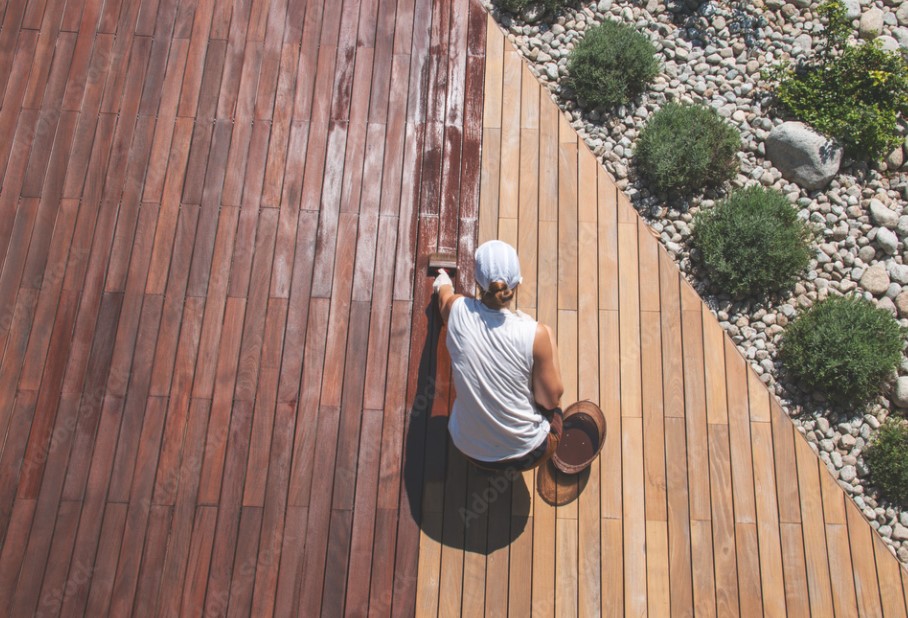
Is it Time to Reseal Your Deck?
Even the most durable wooden deck will start to show signs of wear after a while. When did you have yours installed? Last year? The year before that? If you have to think farther back, then you may want to consider the option to reseal your deck. Not only can it bring luster back to your deck, but also it can preserve the material for many years to come. Here’s our advice for handling the process of resealing a wood deck.
First, see if it’s necessary.
How long your deck will remain sealed depends on a number of different factors. What wood did you decide to use? Was it pre-treated? What environment has it been exposed to over the year(s)? Fortunately, regardless of the answers to these questions, there’s an easy way to test if your deck needs to be resealed: sprinkle some water on it. If it soaks in right away, then the layer protecting the wood from outside moisture is gone. However, if the water beads up, that’s a sign that your sealant has a little more life in it.
Then, it’s time to clean.
Whether or not your deck needs to be resealed, it’s a good idea to clear the surface of all debris periodically. That way, you can prevent items from becoming lodged in between the boards, while scanning for splinters that could harm your family, friends, or guests. Properly cleaning your deck can involve a lot more than sweeping. Depending on the condition, you might need to sand, power wash, scrub, and/or apply chemical deck cleaners. Don’t forget to cover the surrounding landscape to prevent damage, and allow 2 days for it to dry before you go on to apply a new sealant.
 Pick the perfect day.
Pick the perfect day.
You really need two dry days with temperatures staying between 50 degrees and 90 degrees if you’re going to properly reseal your deck. It’s important that the stain have enough time to dry without moisture, but not so quickly that it doesn’t absorb into the wood. Your schedule also needs to allow for the time it’ll take to complete this process correctly.
If you didn’t sand and clean the deck thoroughly before, you should do so for the sealant to become the most effective. Also, be sure to cover and/or move anything you don’t want to be stained as a result of this process. You’ll need to coat the surface completely with the sealant, but not so much that it puddles. You may need to come back with a second or third coat, but slower is better in this case. Maintain one direction throughout (preferably one that goes with the grain of the wood) as you apply a thin coat. Then, allow it to dry completely!
If you didn’t like how it turned out, you can always apply additional layers, and/or change the stain. You’ll need to continue to perform the “water test” every few months to ensure that the sealant is still working, but with practice, this process will get easier. Plus, it’ll keep your deck safe and beautiful for many years to come! If the maintenance ever becomes too much, be sure to talk to our technicians about other decking materials that require less effort.
